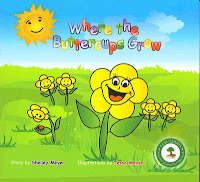
We've got interesting news today - Google signed an agreement with On Demand Books, making its over two million public domain titles available directly to consumers.
The joint press release of On Demand Books and Google explains that Google has agreed to provide On Demand Books (ODB), the maker of the Espresso Book Machine, with immediate access to over two million public-domain titles in the Google digital files.
If you haven't heard yet about these machines, the Espresso Book Machine is a small, patented high-speed automated book-making machine. In about four minutes it can print, bind and trim a 300-page paperback book complete with a full-color paperback cover. Its price as Tom Krazit reports on CNET News ranges from $75,000 to $97,000, depending on the configuration.
Currently you can find the Espresso Book Machines in bookstores, libraries and trade and campus bookstores such as the University of Michigan Shapiro Library Building in Ann Arbor, MI, the Blackwell Bookshop in London, UK, the Bibliotheca Alexandria in Alexandria, Egypt and the Northshire Bookstore in Manchester Center, VT (you can find a full list of the EBM locations here). Wired adds that On Demand Books hopes to sell 60 more printers in the next year, bringing the number of machines globally to about 90.
So our question is of course, is it environmentally friendly?
Let's look first at the FAQ part of On Demand Book's website that is referring to the question Is the EBM an environmentally friendly technology?
Yes. Producing books at point of sale saves tons of CO2 emissions and eliminates returns and the pulping of unwanted books. According to the OECD’s 2008 publication Sustainable Development, “Print-on-demand [the technology used by the EBM and EspressNet] uses an electronic file to produce the book in the country where it is sold, in the exact quantities needed. There is no need to transport the book from one central location, print too many copies ‘just in case,’ or store copies waiting to be sold (or destroyed).” According to a 2007 survey by the Book Industry Study Group and Green Press Initiative, the book sector emits an average of 8.8 pounds (almost 4 kg) of carbon per book produced.
They're definitely right in terms in terms of waste and transportation. As the report they quote is explaining the current model is wasteful - about 1 billion books that were printed in 2006 (or about 25% of the total printed books) weren't sold and then either returned for pulping or reach landfills. At the same time, this report is also emphasizing the fact that paper is responsible for most of the carbon footprint of books (over 60%).
So it means that even though the Espresso Book Machines can save carbon emissions as it provides Print On Demand services on spot at bookstores and libraries, it can generate a significant breakthrough if it will be using recycled paper. Wired reported that On Demand Books suggests that book stores price the books at about $8, leaving retailers with a $3 profit after both Google and On Demand Books collect a buck-a-book fee. I'm quite positive that using recycled paper instead of virgin paper won't increase the price significantly.
Actually it can be done even without raising the price at all - here's an idea: Google, according to Wired, plans to donate its share to a yet-unspecified charity - how about using it to cover any extra cost required for using recycled paper? this way everyone is winning - Google is helping an important cause, readers get to print books on recycled paper at the same price and On Demand Books is making an important step towards making books more sustainable by significantly reducing their carbon footprint.
What do you think? I'll be happy to hear your thoughts about it.
Yours,
Raz @ Eco-Libris
Eco-Libris: promoting sustainable reading!


















